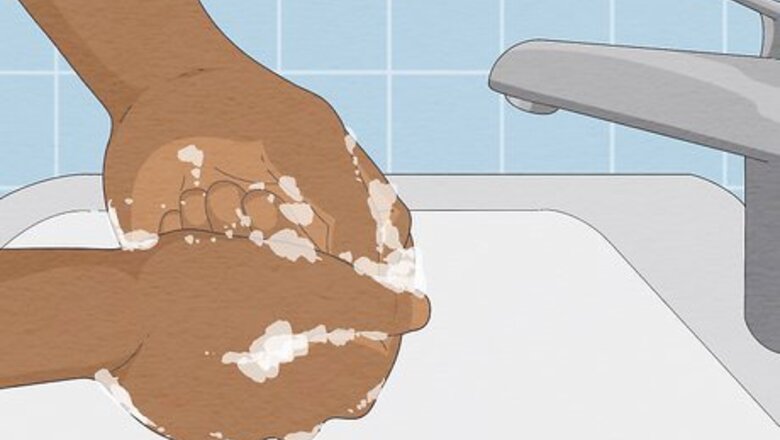
views
- Hold the outer grip of the tampon applicator with the thumb and middle finger of the hand you write with.
- Press the tip of the applicator into your vagina angled toward your back. Slide the applicator in until your fingers on the grip are resting against your vaginal opening.
- Push in the plunger with your index finger until it meets the edge of the applicator's outer grip.
- Slide the applicator out gently, leaving the string trailing out of your vagina. Wrap the applicator in toilet paper and throw it away.
Putting a Tampon In
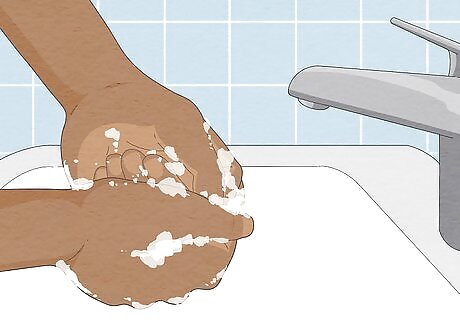
Wash your hands before opening the tampon wrapper. You're putting something inside your body, so keep everything as clean as possible. Wash your hands well with soap and warm water, then dry them thoroughly before opening the tampon.
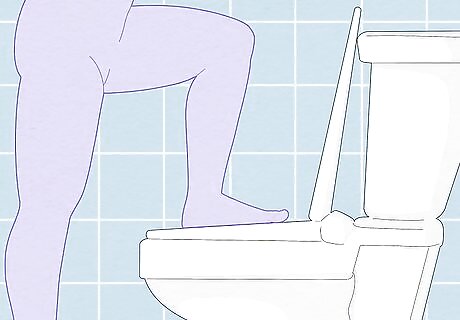
Sit or stand in a comfortable position. You might sit on the toilet with your knees spread, or stand with one foot up on the side of the tub or the toilet seat. Try a few different ways until you figure out what's most comfortable for you. And don't worry about how other people do it—what's important here is what's most comfortable for you and your body. Take a few deep breaths and relax. It'll be more difficult to put the tampon in if you're tense.

Hold the tampon with the fingers you write with. The applicator has a ridged grip at the top of its outer barrel, where it connects with the narrower plunger. Hold it there with your middle finger and your thumb, with your index finger at the top of the plunger. It's understandable if you're nervous—especially on your first time. Take a deep breath and take things slowly. If you accidentally drop the tampon on the floor, throw that one away and start with a new one. Don't risk a bacterial infection just because you don't want to waste a tampon.
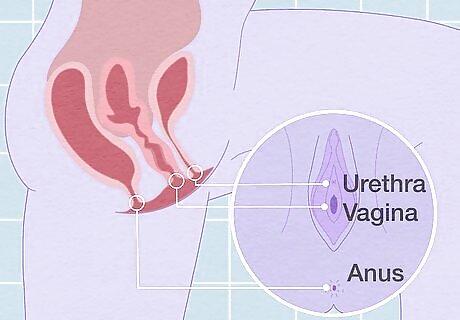
Explore your body with your fingers to find your vagina. You have 3 holes down there and you want to make sure you put the tampon in the right one. In the back is the anus, and in the front is the urethra. The one in the middle is the vagina, and that's the one you want. Your vagina might be hidden behind your labia. Spread them open and you'll find it! Don't worry—there's nothing wrong with touching yourself down there.
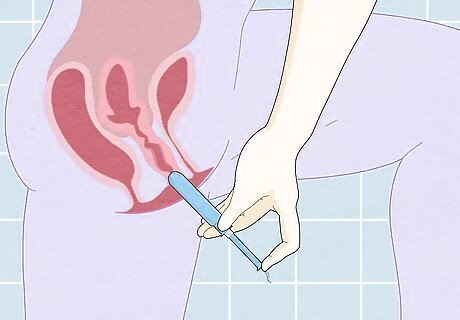
Press the tip of the tampon into your vagina. Angle the tampon toward your back so that it follows the natural angle of your vagina. Then, slowly and gently slide the applicator inside until your fingers are resting at your vaginal opening. If you feel any pain or discomfort, stop and adjust the angle of the applicator. When you've got it right, you likely won't feel much of anything. Hold your labia open with your other hand if that makes it easier for you to see or feel what you're doing. The applicator is the largest thing you'll be putting in your vagina. If you've got it angled properly, you shouldn't feel any pain. But if it's still uncomfortable, you might try a smaller tampon size. If you just started your period, you might also wait until your flow is heavier to start using a tampon (if you have the option!). It's usually more comfortable to insert a tampon when your vagina is a little more lubricated.
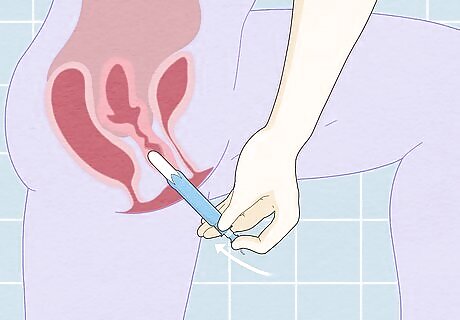
Push the plunger in with your index finger. When you push down on the plunger, it pushes the tampon out of the applicator and into your vagina. Stop when the end of the plunger reaches the grip where your middle finger and thumb are. That's it! You've successfully inserted a tampon.

Take out the applicator with your thumb and middle finger. You don't want to leave this in! It should slide out fairly easily and you'll be left with a string hanging out of your vagina. Don't pull on the string—you might dislodge the tampon. Wrap the applicator in toilet paper and throw it in the trash. If you can feel the tampon when you take out the applicator, it might not be in far enough. The easiest thing to do here is to push it a little further in with a finger. If you're not comfortable putting a finger in your vagina, take the tampon out and try again with a new one. You've got this!
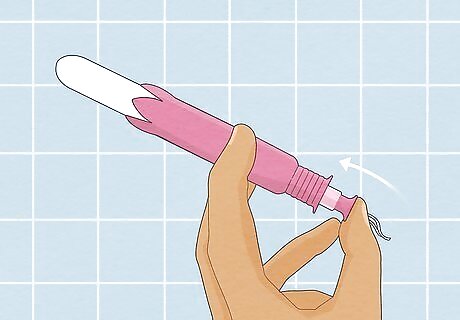
Choose a tampon style that suits your body and flow. With all the different brands and packages available, it can be tough to figure out which tampons you need. But really, it all comes down to 3 things: whether there's an applicator, what kind of applicator it is, and how absorbent the tampon is. Applicator: Some tampons don't have applicators, but for your first time, you'll probably find applicators more comfortable and easier to work with. Type of applicator: Applicators are either plastic or cardboard. The plastic applicators have rounded edges, so they're usually more comfortable. Absorbency: Choose the lowest absorbency that works for your flow. Light absorbency tampons are usually the smallest. Start with light and regular.
Taking a Tampon Out
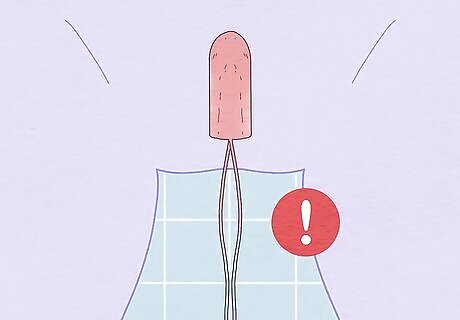
Check on your tampon every couple of hours if possible. Since a tampon is inside you, it's tough to know when it's saturated—especially if you're new to wearing them. If you see any spotting in your underwear or there's blood on the toilet paper when you wipe, that's a sure sign that it needs to be changed. Look at the string as well. If you can see blood or staining on the string, you probably want to take the old tampon out and put in a new one. If you're worried about leaks or spotting, wear a pantyliner to protect your underwear.
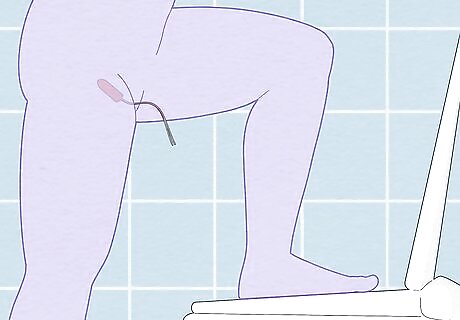
Sit on the toilet with your knees apart. This is usually the most comfortable position to take out your tampon. But if you were standing when you put it in, you might find it more comfortable to stand while you take it out. If you're concerned about getting blood on your hand, get a little toilet paper to put between your fingers. Grab the string with that to keep your hands cleaner.

Pull the string of the tampon at the same angle you inserted it. Grip the string further down, closer to the opening of your vagina. It'll be more difficult if you try to pull from the very end because you won't have as much control over it. Angle it slightly upward and pull slowly and gently. The tampon should slide right out. If you feel a little resistance, try to relax a little. It might be that the tampon is still pretty dry, which will make it more difficult to pull out. Keep your touch light. If you pull too hard, too fast, you could end up with splatter everywhere (especially if you have a heavier flow).
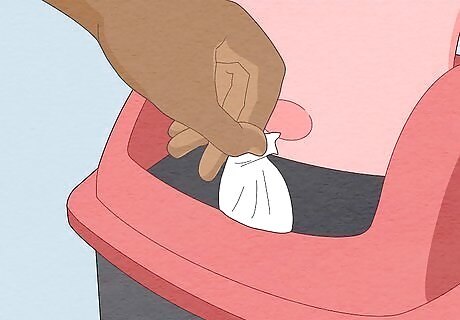
Wrap the used tampon in toilet paper and throw it away. Even though many tampon boxes say that you can flush them when you're done, it's better for the plumbing to throw your used tampon in the trash. Wrap it up just like you would a pad.
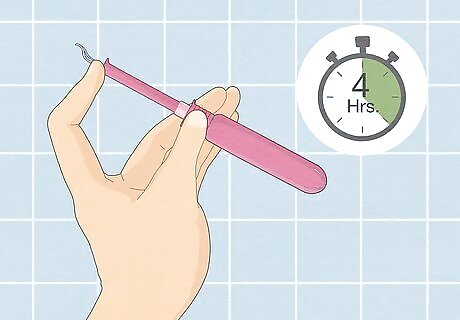
Change your tampon every 4 hours. Changing your tampon regularly is best for your vaginal health. Every 4 hours is a good rule of thumb to follow, although you might need to change it more frequently if it gets saturated before then. If you're going to be in a situation where you won't be able to go to the bathroom to change your tampon at least once every 4 hours, it's probably better to just wear a pad. There is a risk of Toxic Shock Syndrome (TSS), a bacterial infection. It's rare, but it's still worth worrying about because it can be fatal. To minimize your risk of developing TSS, use the lowest absorbency you can and never leave your tampon in for more than 8 hours.
Facts about Using Tampons
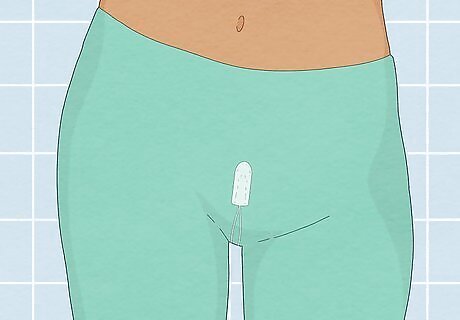
You can never lose a tampon inside your body. A tampon is much, much too large to enter your cervix—the tiny opening at the other end of your vagina. So really, it has nowhere to go but out. You don't have to worry about losing it. The durable string runs through the entire tampon—it's not just attached to the end. That makes it very difficult for it to just break off. If the string does break, don't panic. Coat your fingers in a lubricant (the kind people use for sex) and you should be able to reach in and grab the tampon. Worst case scenario, tell a trusted adult or call your doctor to help you.
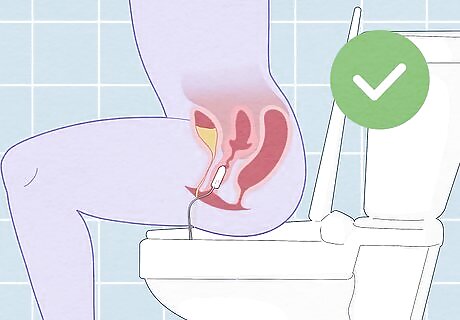
You can still pee when you're wearing a tampon. Your urethra, where you pee from, is above your vagina. While you might want to move the string to the side so you don't pee on it, there's no issue with peeing when you have a tampon in. If you do pee on the string, that's usually no big deal. But if you feel weird or self-conscious about it, go ahead and change your tampon.
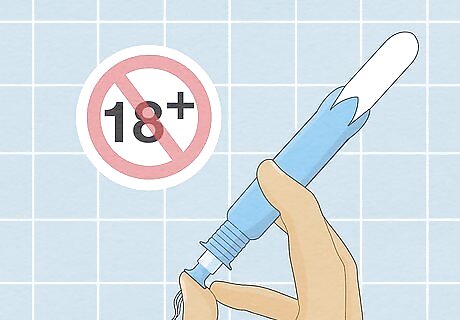
Anyone of any age can wear a tampon. As soon as your period starts you can use a tampon to absorb the menstrual blood. Many people wait until they're a little older to start using tampons, but it's not a requirement.
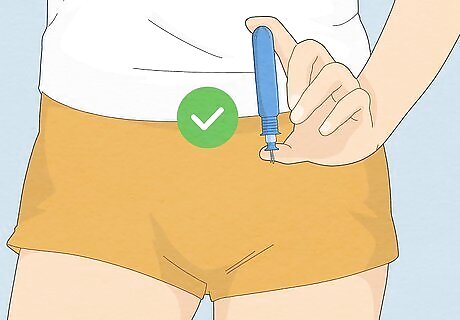
You don't have to be sexually active to use tampons. Using a tampon won't cause you to "lose" your virginity—only having sex will do that. It's true that using a tampon might cause your hymen to stretch or tear, but that can also happen as a result of many different physical activities that have nothing to do with vaginal penetration. If you're worried that your vagina is too small for tampons, start with the smallest size of tampons available.















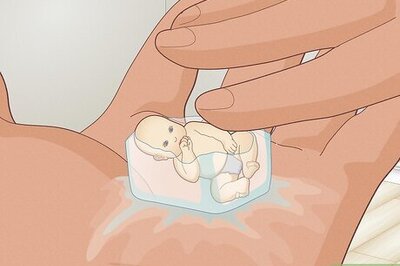


Comments
0 comment